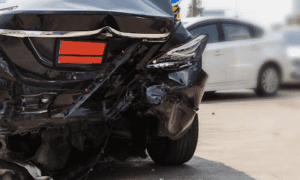Car accidents are unfortunately a common occurrence on roads worldwide, often resulting in severe consequences for those involved. Apart from the physical and emotional toll they take, car accidents can also lead to legal ramifications. Car accident lawsuits play a significant role in determining liability and providing compensation to the victims. Understanding the impact of these lawsuits is crucial for both drivers and pedestrians alike. In this article, we will delve into the subject, exploring various aspects of car accident lawsuits and their implications.
The Basics of Car Accident Lawsuits
Car accident lawsuits are legal actions brought by individuals seeking compensation for injuries and damages sustained in a car accident. These lawsuits are typically based on the legal concept of negligence, which requires proving that one party’s negligence or carelessness caused the accident and resulting injuries. The injured party, known as the plaintiff, files a lawsuit against the at-fault party, known as the defendant.
Determining Liability
One of the primary objectives of a car accident lawsuit is to determine liability. This involves establishing who is at fault for the accident. Liability can be attributed to one or more parties involved in the accident, depending on the circumstances. Factors such as speeding, disobeying traffic laws, driving under the influence, or distracted driving can contribute to establishing liability. It is essential to gather evidence, including eyewitness accounts, police reports, and expert testimony, to support the plaintiff’s claim and prove the defendant’s negligence.
Compensation for Damages
Car accident lawsuits seek compensation for various types of damages suffered by the plaintiff. These damages can be classified into economic and non-economic categories. Economic damages include medical expenses, property damage, lost wages, and other quantifiable financial losses. Non-economic damages, on the other hand, cover pain and suffering, emotional distress, loss of companionship, and diminished quality of life. The court considers both types of damages when determining the appropriate compensation amount.
Insurance and Settlements
Car accident lawsuits often involve insurance companies, as they play a significant role in providing coverage for damages. In many cases, the defendant’s insurance company handles the legal defense and negotiates potential settlements on behalf of the defendant. Settlements are agreements reached between the involved parties to resolve the lawsuit outside of court. They often involve a monetary payment from the defendant’s insurance company to the plaintiff in exchange for the plaintiff dropping the lawsuit. Settlements can provide a faster resolution and avoid the uncertainty and costs associated with going to trial.
Going to Trial
When a car accident lawsuit cannot be resolved through negotiation or settlement, it may proceed to trial. Trials involve presenting the case before a judge and/or jury who will make a final decision regarding liability and compensation. Going to trial can be a lengthy and complex process, requiring both parties to present evidence, question witnesses, and argue their respective positions. The outcome of the trial will determine the liability of the defendant and the amount of compensation the plaintiff may receive.
Contributory and Comparative Negligence
In some jurisdictions, the concept of contributory or comparative negligence is applied when determining liability and compensation in car accident lawsuits. Contributory negligence holds that if the plaintiff is found to have contributed in any way to the accident, they may be barred from recovering any compensation. Comparative negligence, on the other hand, assigns a percentage of fault to each party involved in the accident. The compensation awarded to the plaintiff is then reduced based on their degree of fault. These doctrines aim to allocate responsibility and ensure fairness in determining compensation.
Whether through insurance settlements or litigation in court, car accident lawsuits aim to determine liability and provide compensation for economic and non-economic damages. The concepts of contributory and comparative negligence highlight the importance of responsible driving and the impact it can have on legal outcomes. By promoting safety and accountability, car accident lawsuits strive to create a safer environment for all road users. Reach out to The Law Offices of Anidjar & Levine for more information.



































